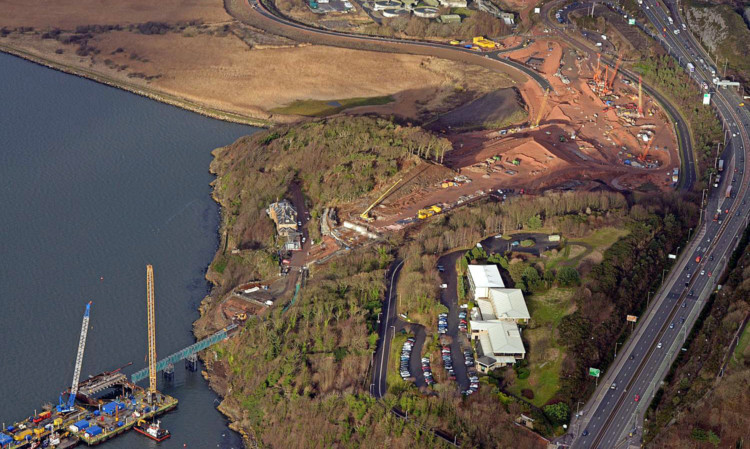The foundations of the new Forth bridge are in place and they will soon reach for the skies.
This year the towers of the £1.4 billion Queensferry Crossing will truly emerge from the waves. The central tower, on the Beamer Rock, will top the 25 metre mark as the latest section of concrete is poured.
The north and south towers, which are also now above the waterline, will rapidly catch up as construction teams “race to the top”. By the middle of the year the towers should be at the height of the deck on the neighbouring Forth Road Bridge.
Once at this stage, the first segments of the deck shipped in from China and due to arrive in the summer will be added to the towers, fanning out across the Forth.
This is scheduled to take place in the second half of the year. The central tower is leading at the moment but that will slow down a bit and the other two towers will catch up, Transport Scotland project director David Climie explained.
Meanwhile, the southern approach viaduct is taking shape on land, ready to launch out across the water. Work on the north viaduct is also progressing well.
Carlo Germani, the project director for constructors FCBC, said: “At this stage of the project people can now see something happening. For a long time all the work was being done under water.”
But there was a warning for drivers craning their necks to the left as they headed northbound on the road bridge to “keep their eyes on the road” and not be distracted.
Even without the bridge, improvement works on the road network on both sides of the Forth are benefiting motorists.
Mr Climie said the M90 intelligent transport system in Fife, coupled with the new £10 million Halbeath Park and Ride, was shaving between five and eight minutes off peak-time journeys.
The accident rate has also been reduced, although it is too early to make any definite conclusion on that.
On the south side, the new M9 junction 1a is saving drivers two minutes at peak times while it has drastically reduced traffic thundering through Newton. Some 13% fewer vehicles and 52% fewer HGVs are now using this road.
There is also a spin-off for Scottish business and workforce.
There are now 953 workers on site this will rise again to around the 1,200 high recorded at the end of 2012 with 43% from Fife, Edinburgh and the Lothians, and 35% from the rest of Scotland.
